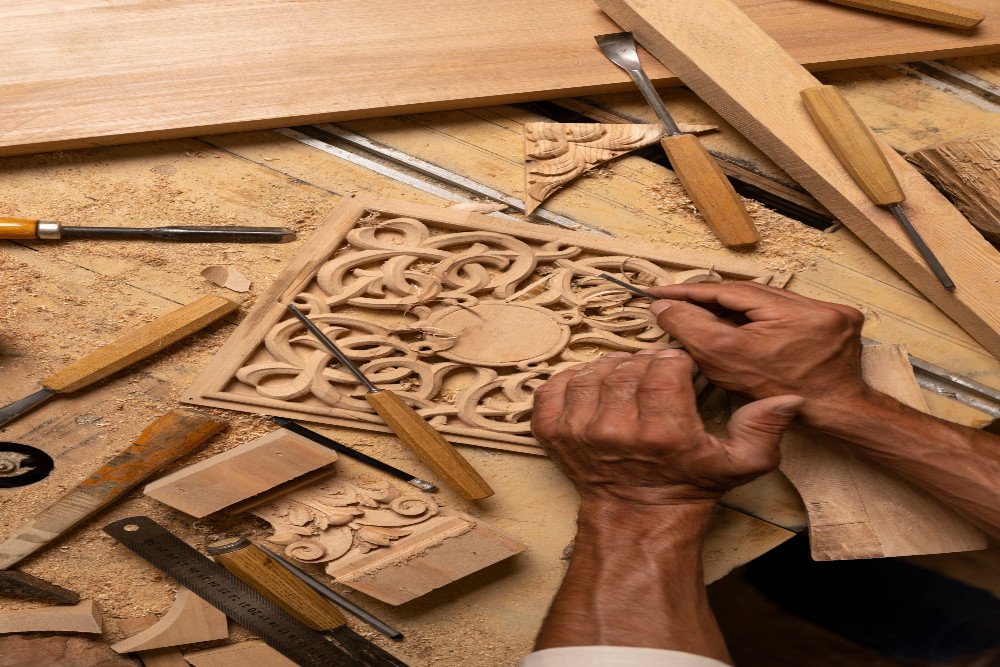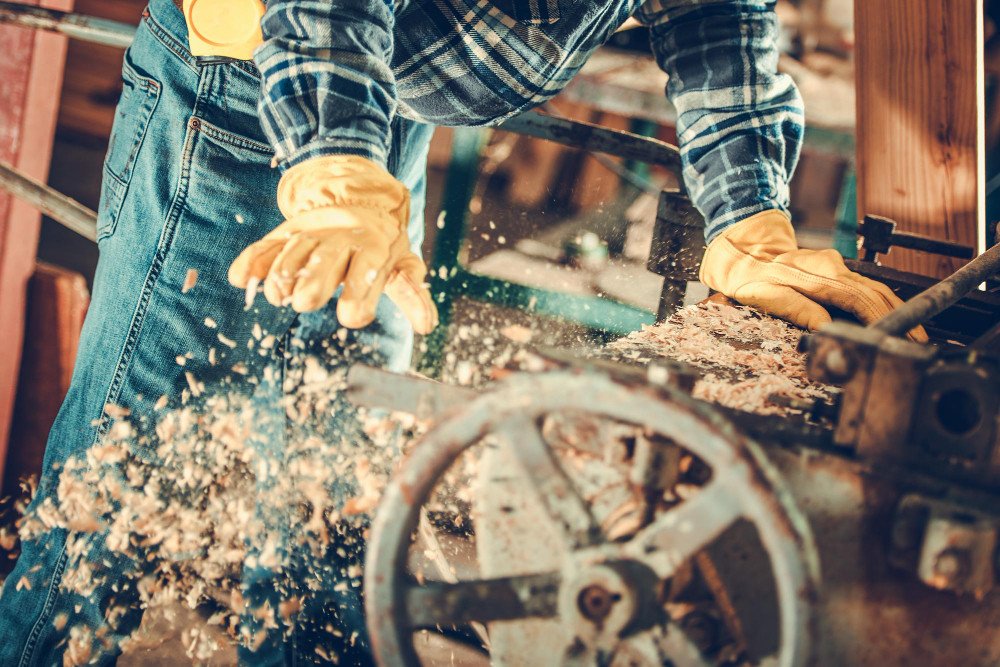Carpenters & Joiners
Topics of Interest
Tips and Ideas |
Cost Estimation |
Key Considerations |
Trends and Techniques |
Role of a Joiner or Carpenter on a Construction Site
Joiner
Specialization:
Typically focuses on interior work, such as fitting doors, windows, and
cabinetry.
Tasks:
Constructing
and installing wooden frameworks, such as door frames and window frames.
Creating
bespoke furniture and built-in storage solutions.
Performing
finishing work, including skirting boards and architraves.
Carpenter
Broader Scope:
May work on both interior and exterior projects, including structural work.
Tasks:
Building
structural frameworks for roofs, walls, and floors.
Installing
formwork for concrete structures.
When undertaking carpentry or joinery work, several technical considerations are essential for ensuring quality, safety, and compliance with standards. Here are the key aspects to keep in mind:
Material
Selection: Choose the appropriate type of wood based on its intended use.
Consider factors like strength, durability, moisture resistance, and aesthetic
appeal.
Wood Treatment:
If using softwood, ensure it is treated for protection against pests and
moisture, especially for external applications. Use pressure-treated wood where
necessary.
Joinery
Techniques: Familiarize yourself with various joinery techniques (e.g.,
dovetail, mortise and tenon, biscuits) and choose the right method for your
project to ensure strength and stability.
Measurements
and Marking: Take accurate measurements and mark them clearly before cutting.
Double-check dimensions to minimize waste and ensure a precise fit.
Cutting
Techniques: Use the appropriate tools (saws, routers, chisels) for cutting
wood. Ensure blades are sharp and in good condition to achieve clean cuts.
Fasteners and
Adhesives: Select suitable fasteners (screws, nails, dowels) and adhesives for
your materials and application. Follow manufacturer recommendations for
load-bearing joints.
Finishing:
Consider the type of finish (paint, stain, varnish) to be applied. Ensure the
surface is prepared correctly for adhesion, and follow safety guidelines when
using chemicals.
Tool Safety:
Use personal protective equipment (PPE) such as goggles, gloves, and dust
masks. Ensure tools are well-maintained and used according to manufacturer
instructions.
Weight and
Load-Bearing Capacity: Assess the load-bearing capacity of your structures.
Ensure that shelves, beams, and other elements can support the intended weight.
Building
Regulations: Familiarize yourself with local building regulations and
standards, particularly if the work involves structural elements or alterations
to existing structures.
Environmental
Considerations: Consider sustainable practices, such as using sustainably
sourced wood and minimizing waste. Recycle or repurpose leftover materials
where possible.
Moisture
Control: Be aware of moisture content in wood, particularly when working with
fresh timber. Use a moisture meter to ensure wood is at an appropriate level
for installation.
By considering
these technical aspects, you can achieve high-quality results in your carpentry
or joinery projects while ensuring safety and compliance with relevant
standards.
Cost Estimations
Hourly Rate:Joiners and carpenters typically charge between £20 and £50 per hour, depending on experience and location.
Day Rate:Many work on a day rate, which can range from £150 to £300 per day.
Project Pricing
Basic Carpentry:Simple tasks like installing a door or basic shelving may cost £100 to £500.
Custom Joinery:More complex projects, like bespoke furniture or high-end cabinetry, can range from £1,000 to £5,000 or more.
Structural Work:Major projects, such as building an extension, may start at £5,000 and can go significantly higher, depending on the scope.
Additional Costs
Materials:Always factor in the cost of materials, which can significantly impact the total cost.
Extras: Be aware of potential extra charges for changes in scope, unforeseen issues, or additional materials.
Note:Always clarify the payment terms and any potential extra charges before starting the work.
Key Considerations When Hiring
When choosing a
carpenter or joiner in the UK, consider the following factors:
1. Qualifications and Experience
Certifications:
Check for relevant qualifications, such as NVQs or City & Guilds.
Experience:
Look for someone with experience in the specific type of work you need.
2. Portfolio and References
Client
Feedback: Ask for references from previous clients and check online reviews to
gauge their reputation and reliability.
Search for the
Trusted Trade People on https://buildersvalley.com/
At Builders
Valley you can find a verity of professional trade persons not only you indeed
even any kind you may need in future.
3. Specialization
Type of Work:
Ensure they specialize in the type of carpentry or joinery you require (e.g.,
bespoke furniture, structural work).
4. Insurance and Guarantees
Public
Liability Insurance: This protects you in case of accidents.
Work Guarantee:
Check if they offer guarantees on their work.
5. Quotes and Pricing
Multiple Quotes:
Get quotes from several carpenters to compare prices and services.
Detailed
Estimates: Ensure quotes include materials, labour, and any potential extra
costs.
6. Communication
Responsiveness:
Choose someone who communicates clearly and is easy to reach.
Understanding:
They should understand your vision and requirements.
Trends and Techniques
If you are
interested and wants to know what new trends are in then must read this topic
and keep following Builders Valley platform.
Here are some
current trends in the carpentry and joinery market that professionals should be
aware of:
1. Sustainable Practices
Eco-Friendly
Materials: Increasing demand for sustainable wood products, like FSC-certified
timber and reclaimed wood.
Green Building:
Emphasis on energy-efficient designs and materials that contribute to
environmentally friendly construction.
2. Smart Home Integration
Technology
Integration: Incorporating smart technology into wooden structures, like
built-in charging stations and smart home systems in cabinetry.
Custom
Solutions: Tailoring installations to accommodate smart devices, such as
speakers and lighting.
3. Minimalism
Clean Lines:
Simple, minimalist designs that prioritize functionality and aesthetic appeal.
Decluttered
Spaces: Solutions that focus on hidden storage to maintain a clean and open
environment.
4. Innovative Materials
Engineered Wood
Products: Increased use of materials like plywood, MDF, and laminate for
versatile applications.
Alternative
Materials: Exploration of non-traditional materials, such as metal and glass,
combined with wood.
5. Health and Well-being
Biophilic
Design: Incorporating natural elements into design to enhance well-being, such
as wooden elements that create a connection to nature.
Air Quality
Considerations: Using materials that contribute to better indoor air quality.
6. Digital Fabrication
CAD and CNC
Technology: Utilization of computer-aided design (CAD) and computer numerical
control (CNC) machines for precision and efficiency.
3D Printing:
Emerging use of 3D printing for creating intricate joinery elements.
7. Minimalist Aesthetics
Clean Lines:
Simple, understated designs that prioritize functionality and elegance.
Neutral
Palettes: Use of natural wood finishes and muted colours to create a calming
environment.
8. Natural Elements and Biophilic Design
Wood as a
Feature: Highlighting natural wood grains and textures to bring warmth and
nature indoors.
Indoor-Outdoor
Flow: Designs that create a seamless transition between indoor and outdoor
spaces.
9. Detailed Craftsmanship
Joinery
Techniques: Resurgence in traditional joinery methods, such as dovetail joints
and mortise-and-tendon, for both aesthetic and structural integrity.
Intricate
Detailing: Focus on decorative elements like mouldings and panelling that add
character to spaces.
10. Colour and Finishing Trends
Bold Colors:
Incorporating vibrant colours in cabinetry and furniture to make a statement.
Textured
Finishes: Use of matte or textured finishes that enhance the tactile quality of
wood.







